Here we are, in Palmanova, ready for a new adventure to discover the most hidden places and locations throughout Italy, a fantastic journey that never ceases to amaze us with history, architecture, art and beauty. Today we head to a true Renaissance architectural jewel in the heart of Friuli-Venezia Giulia.
Founded by the Venetians in 1593 as a fortress city, characterized by a peculiar star-shaped outline, Palmanova still retains its original avant-garde defensive structure made up of imposing polygonal walls that enclose an impressive city with perfectly symmetrical radial streets. Conceived to all intents and purposes as a war machine, Palmanova today has left its warlike past behind, becoming instead an enchanting icon of Italian architectural genius and a tourist destination.
We're leaving to Friuli-Venezia Giulia, destination Palmanova, the incredible nice-pointed star-shaped town: check it out with us!

Palmanova: the star-shaped town as National Monument and Unesco's Site
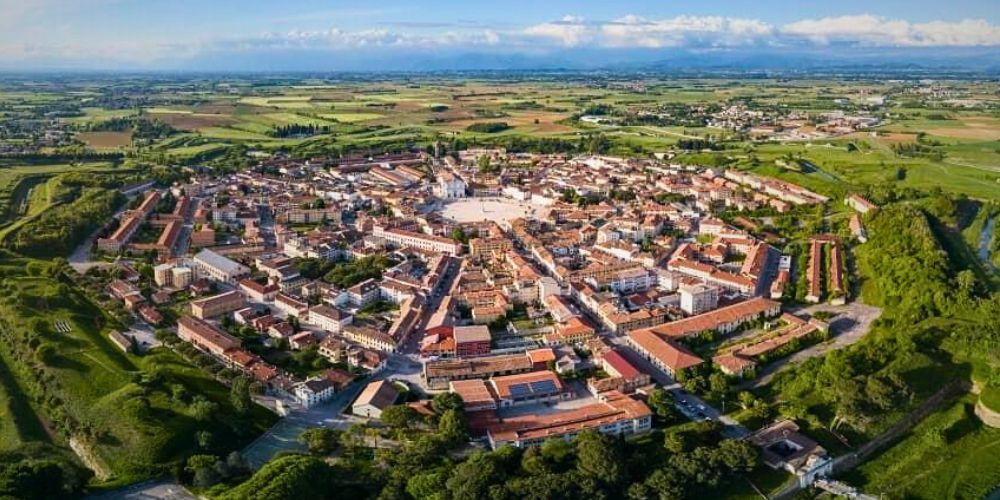
Palmanova is a town of about 5000 inhabitants in the province of Udine, between Venice and Trieste, in Friuli-Venezia Giulia. Its foundation took place in 1593 by the Venetians who built this fortress town with the characteristic polygonal geometry consisting of a nine-pointed star.
Called the star-shaped town, in 1960 it was declared a national monument due to its great historical, political and cultural value. In addition, it became a World Heritage Site by UNESCO in 2017, being included in the Transnational Serial Site "Venetian Defence Works between the 16th and 17th centuries: Land State-Western Sea State".
This site, which extends over more than 1000 km, consists of 6 structures located in Italy (Palmanova, Peschiera del Garda, and Bergamo), Croatia (Zadar and Šibenik) and Montenegro (Kotor). The fortifications were built to defend the Venetian Republic and more specifically the Stato da Tera, the mainland dominions of the Venetian Republic (the Po-Venetian hinterland, the Dogado, or duchy, which corresponds to the metropolitan territory of Venice) from attacks by powers from the North-West and the Stato da Mar (the maritime dominions) from the East. Therefore, it is a fortified system with a European dimension and an important symbolic and historical, as well as architectural, value.
Hey, do you know that Palmanova is less than 2 hours away by car (A4 highway) from Venice? Don't miss the opportunity to visit the Serenissima, join amazing experiences and discover everything about its magic and the richness of its history, a past where to find the origins of a gem like Palmanova. How? Well, find out below!
Explore Venice with Venice PassPalmanova, discovering the star-shaped: Piazza Grande and the Doge's Cathedral
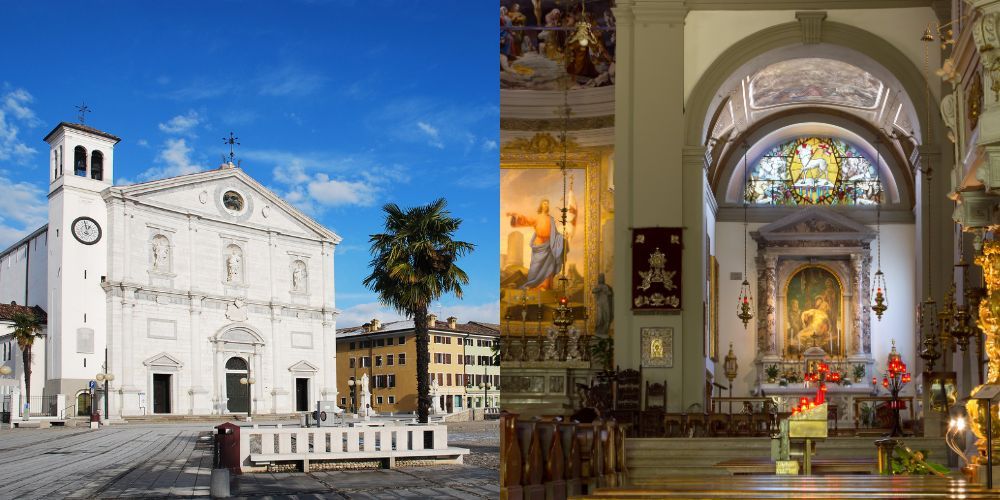
From above, the fortress city is truly a perfect star, with its nine points pointing towards the green Friulian plain. Visitors can enter the city through one of the three perfectly preserved gates - Porta Udine, Porta Cividale, Porta Aquileia - and follow the symmetry of the streets through the districts leading to the main square, Piazza Grande.
The square has hexagonal structure and is the heart of the old town and the fortress, as well as the centre of town life. Built by the Venetians in the 17th century, it was known as the Piazza d'Armi (Square of Arms) because the General Superintendent of the Venetian Republic used to gather his troops there for military exercise. In the centre of the square is a six-sided basement made of Istrian stone, a witness to historical events and a symbol of the fortress. All around, there are 11 statues representing the Governors-General of the Venetian Republic.
One of the most prestigious buildings is the Doge's Cathedral, dedicated to the Most Holy Redeemer. It was built between 1615 and 1636 by the Ufficio Fortificazioni di Venezia (lit. the Office of Fortifications in Venice) although some sources suggest it was designed by the Renaissance architect Vincenzo Scamozzi. Its snow-white façade is made of white stone from Vrsar (a particular stone from Croatia) and grey stone from Aurisina (from the municipality of Duino-Aurisina in the province of Trieste). Designed on two orders with four half-columns on each level, it is surmounted by an elegant pediment with the symbol of the Venetian Republic, St Mark's lion. The current one, however, was reconstructed in bronze in 1894 by the sculptor Busetti from Palmabova to replace the original one removed by the French in 1797.
The statues of the Holy Redeemer in the centre and the Saints Mark and Giustina at the sides stood out in the three niches of the façade. The height of the bell tower is reduced because, being a fortress, the buildings did not have to be exposed to enemy firing. Internally, the cathedral has a single large nave, surmounted by oak trusses.
It houses several valuable works, including the Pala delle Milizie (Altarpiece of the Militia) by the Paduan painter Alessandro Varotari known as the Padovanino, and the famous wooden Virgin and Child Jesus attributed to Domenico da Tolmezzo (from Udine), among the major ones. Strolling through the square, we can admire the numerous buildings that overlook it: the Governor-General's Palace, the Lodge della Gran Guardia, Palazzo del Monte di Pietà and Palazzo del Governatore delle Armi that constitute a significant complex of military architecture.
Attention should be paid to the way in which all the radial streets unravel and converge from the core of the fortress, highlighting the deep link between the internal and external urban layout.
How to get to Palmanova: itineraries in Friuli-Venezia Giulia
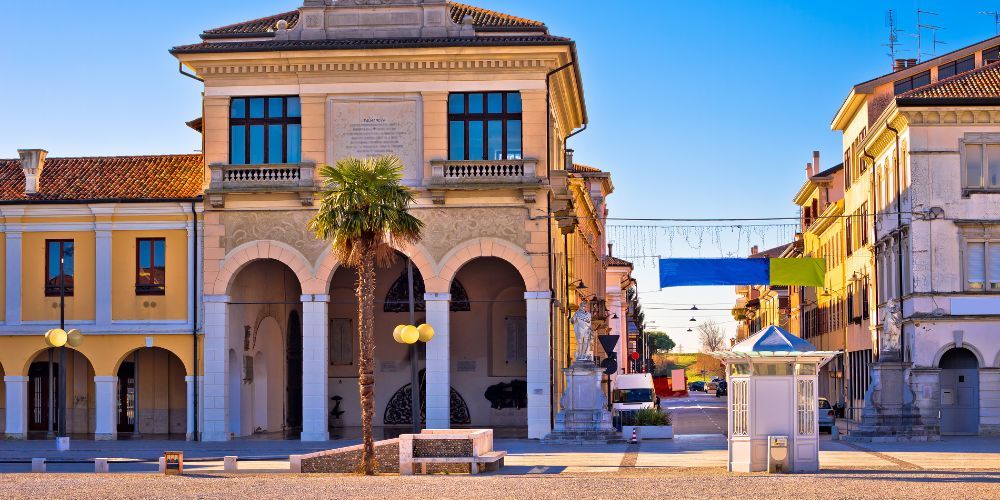
The city of Palmanova can be easily reached by car starting from three cities: first of all Udine, the province to which it belongs, by driving on the A23 highway or on the SR352; then we must not forget Venice, which as mentioned before is connected to the starry city via the A4 highway; and finally Trieste, from which Palmanova can be reached following the same motorway.
Speaking of Trieste...do you want to visit something beautiful in the city? Check out the incredible Biodiversitario Marino (BioMa), find out more below!
Visit BioMaThe origins of the star-shaped town: brief history of Palmanova
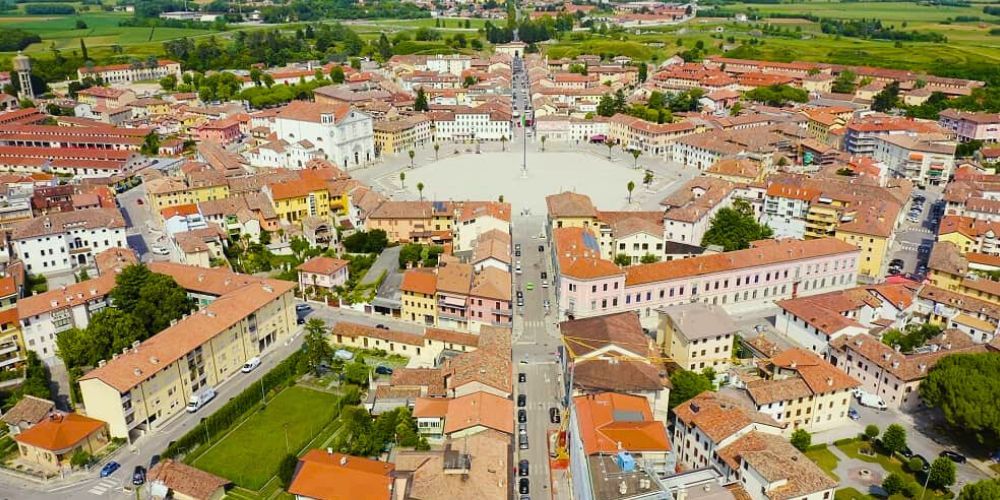
The foundation stone of the fortress-city of Palmanova was laid in 1593, specifically on 7th October 1953. This day was chosen for two very important anniversaries for the Venetian Republic as if to seal the city's role in containing the Ottoman advance.
One is the commemoration of Santa Giustina, who became the patron saint of the new town of Palmanova, and the other is the anniversary of the victory over the Turks during the Battle of Lepanto on 7 October 1571.
For two centuries in the orbit of the Venetian Republic, and exactly until 1797, it was conquered by Napoleon Bonaparte, who had put his hand to the political organization of northern Italy. In June 1797, the Cisalpine Republic (extended to Lombardy, Emilia-Romagna, and parts of Veneto and Tuscany) was formed under Jacobin control, following the events that took place in Italy after the French Revolution and culminated in the Italian campaign (1796-1797). With the stipulation of the Treaty of Campoformio (17th October 1797), the Austrian Empire formally recognized the Cisalpine Republic, but Napoleon had to cede the Republic of Venice to Austria. Then, Palmanova came under Austrian influence from 1798 to 1805. Later, the Cisalpine Republic took the name of the Italian Republic (1802-1805) and became the Kingdom of Italy (1805-1814). The Kingdom, with Milan as capital, included central and eastern Italy and much of the north and was dissolved in 1814 with the fall of Napoleon. Following this, Palmanova was incorporated again into the Habsburg Empire until 1866, when it was finally annexed to the Kingdom of Italy by plebiscite.
In 1893, by decree, the town lost its status as a "stronghold'" and passed directly under the civic administration. During World War I, it became the main marshaling yard for the 3rd Army (destined for the Carso and Trieste operation areas), suffering several air raids and partially destroyed by the Italian troops retreating from Caporetto. Thanks to the initiative and enormous courage of Archpriest Giuseppe Merlino, the Germans were prevented from razing the town during World War II: he managed to convince them to abandon Palmanova without destroying it.
Later, in 1960, the then President of the Republic, Giovanni Gronchi, issued a presidential decree proclaiming Palmanova a national monument.
Palmanova: check out the star-shaped town between history and folklore
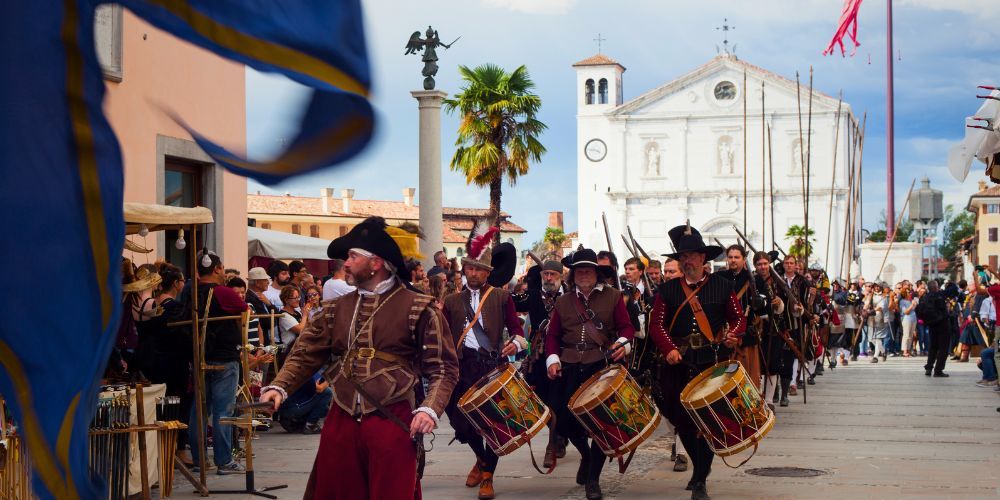
The town of Palmanova, due to its geographical location, lies in an area steeped in history, deeply marked by wars and tragic events. This is why the people here are so proud of their past and their origins. An example of this, the historical-religious re-enactments that are celebrated here.
One of the most important is the A.D. 1615 Palma alle Armi ("Palma at Arms"), during which 1,000 participants in seventeenth-century costumes retrace the beginning of the Uskoks between Austria and the Republic of Venice. It is celebrated every year on the first weekend of September.
Festa del Santissimo Redentore (feast of the Holy Redeemer, patron saint of Palmanova), takes place on the second Sunday of July but also coincides with the day on which the General Superintendent Gerolamo Cappello in 1602 ordered the flag of the Venetian Republic to be raised for the first time in the centre of the square. Hundreds of people wearing costumes, armor, and weapons of the time take us back more than four centuries in a particularly evocative atmosphere.
Finally, on 7th October the Fiera di Santa Giustina - Regioni di gusto (literally, the fair of Santa Giustina - Regions of Taste) is celebrated. Santa Giustina, patron saint of Palmanova, was a young Roman martyr killed at the behest of the prefect Maximus because she was guilty of being a Christian and of having helped her fellow believers. Following the victory at the Battle of Lepanto (1571), which took place on 7th October, the cult of Santa Giustina spread throughout the territory of the Venetian Republic. The sacred aspect is accompanied by the profane one, with a fair rich both in local products and others from the Italian regions.
A further link with history is provided by the Museum of the Great War and the Fortress of Palmanova, which provide an insight into the military history of the town from its origins to the present day. Palmanova, framed in a luxuriant nature, is a city with a warlike past and a strong historical-military vocation: a priceless treasure to be celebrated, protected, and discovered!
Palmanova, a real war machine

As already mentioned, its rigorously geometric structure and its star shape make it a significant example of well-preserved military architecture and an ideal Renaissance city. Due to its powerful structural characteristics, and its protective role in a defensive complex, it is considered a real "war machine".
Another peculiarity of Palmanova was its characteristic invisibility. In fact, it was built lower than the horizon line, hiding from enemy eyes unable to distinguish it perfectly. Moreover, with hills and mountains at a distance, and with the outer walls covered by earth and vegetation, the city was totally camouflaged. For these reasons, it was from the outset considered the most impregnable fortress in Europe, inspiring many other European fortresses including Pamplona's one in Spain.
The urban nucleus covers about 70 hectares and is enclosed within three concentric circles of walls, the two innermost of which were built by the Venetians and the outermost by Napoleon Bonaparte. The first circle dates back to the period of its foundation, 1593-1620, and was built by expert Venetian architects. The second was built between 1665 and 1683, again by the Venetian Republic, and strengthened the defensive structure. The third, and last, was built according to Napoleon's will between 1806-1809, who decided to make the walls more modern and effective.
Several fortified elements and ramparts can be recognized in the Historical Park: bastions, curtains, ravelins, false-brags, lunettes, esplanades, and counter-ports that bear witness to the evolution of military architecture. The underground tunnels, which date back to the 17th century, were used to reach enemy positions, under which a chamber was created to be filled with gunpowder and blown up. Some of the well-equipped galleries are open to the public and can be visited with the help of an audio guide. The historical park of the ramparts and the galleries represent the most significant and interesting part for tourists.
About the author
Written on 25/11/2023


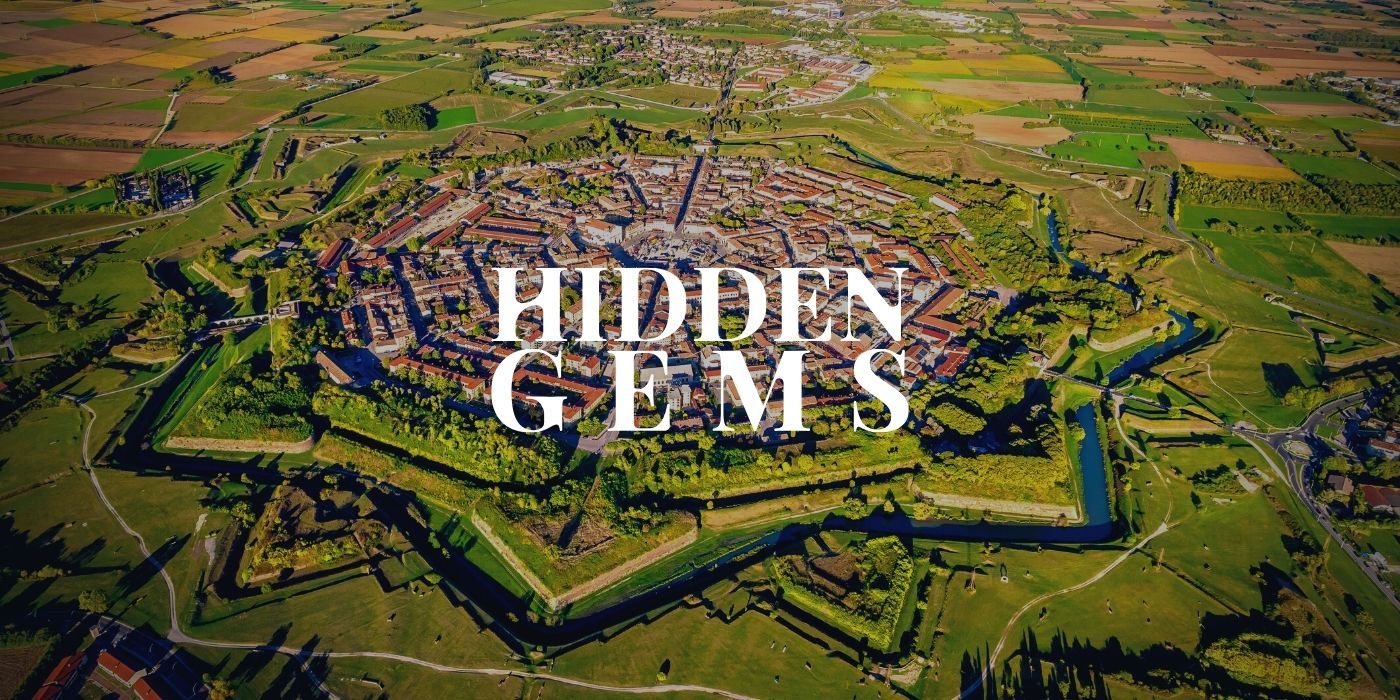
Alessandra Festa
In Friuli-Venezia Giulia a nine-pointed star shines, it's Palmanova! Check out with us what to see and do in this amazing star-shaped town.